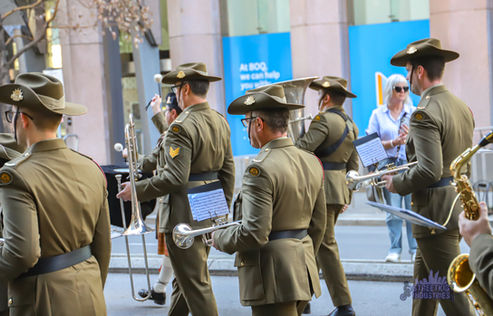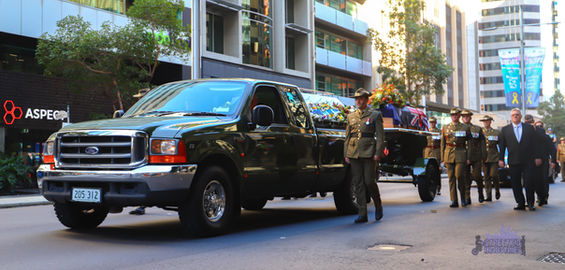
Arthur Leggett - WW2 POW
Western Australia’s last Prisoner of War from WW2 (and quite likely, the last in Australia or the world!), Arthur Leggett, passed away on 6 March 2025 at 106 years old.

Cameron Highlanders of Western Australia
At the age of 18, Arthur enlisted with the Cameron Highlanders of Western Australia in 1936, the same year they were formed. Highlanders originate from the Scottish Highlands, a mountainous region in northern Scotland, although the term can describe anyone living in the mountains.
Due to a desire to raise a Scottish-style military unit, Captain Charles Wilson Courtney, a prominent doctor associated with the Repatriation Department, offered to raise the Battalion (p.298). Affiliated with The Queen’s Own Cameron Highlanders, it allowed them to not only contribute to the nation’s defence but to also “carry on specific Scottish military traditions within Western Australia”.
The Queen’s Own Cameron Highlanders was a Scottish infantry regiment formed in 1794, fighting in many British Army campaigns until they merged with the Seaforth Highlanders in 1961 to become The Queen’s Own Highlanders. The name Cameron derives from Sir Allen Cameron of Erracht (a Highland Scottish family).

Cameron Highlanders First Parade, Perth
Australian Imperial Forces (AIF)
Arthur later joined the Australian Imperial Force (AIF) with the 2/11th Battalion, 6th Division.
The Australia Imperial Forces was the name given to Australian forces serving overseas during WW1 and WW2, a completely separate entity from those serving in the home defence forces. The First AIF formed in August 1914, shortly after the outbreak of World War 1 and comprised of all volunteers until it disbanded in 1921.
The Second AIF was raised in September 1939 as a result of World War 2. This also comprised of volunteers who served all over the world in support of Great Britain and the Allies.
2/11th Battalion, 6th Division
The 6th Division was formed on 28 September 1939, the first division to form, as part of the Second AIF.
The 2/11th Battalion was raised on 13 October 1939, the first infantry Battalion formed in Western Australia for overseas service (a Battalion comprises of four companies with strength of between 550-1000 personnel). Lieutenant Colonel Thomas Steane Louche, who was appointed the first commanding officer, was also associated with the Cameron Highlanders of Western Australia.
Arthur was trained as a signaller, a crucial position with the role of communicating between companies and battalion headquarters in the Middle East. This took him to the conflicts in Libya, Greece and Crete.
.jpg)
2-11th Battalion aboard SS Pennland from Alexandria to Greece in March 1941
Battle for Retimo
Things took a toll for the worse when at age 22, Arthur was held captive by the Germans from 1941.
In early April 1941, 2/11th Battalion was deployed to Greece to help defend their allies against the Germans. Unable to hold them back, 2/11th remained on the move a number of times, until they were involved in heavy engagement with German paratroopers, whilst defending the Retimo airfield.
After 10 days of conflict, the 2/11th Battalion couldn’t hold their defence for any longer, which resulted in the Battalion suffering a devastating loss. Whilst a few managed to escape, many personnel were killed or taken as prisoner of war.

German paratroopers land in Crete in March 1941
Stalag POW Camps
Records show that Arthur was held in three different German POW Camps: Stalag VIII-B, Stalag 344 and Stalag VII-A.
Stalag is short for Stammlager, which stems from the German word Kriegsgefangenen-Mannschaftsstammlager. In English, this translates to “main camp for enlisted prisoners of war” with Stalag translating to “main camp”.
Stalag VIII-B: Located near the village of Lamsdorf in Silesia, the Prisoner of War camp originated in the 1860s as a training area for artillery soldiers of the Prussian Army. During WW1, the barracks housed up to 90,000 detainees, mostly soldiers who were British or French. Upon recommissioning in 1939, the camp accommodated Polish prisoners, with up to 100,000 later detained from many different nations.
Stalag 344: In 1943, Lamsdorf camp was split up, which resulted in many prisoners being transferred to two other camps, Stalag VIII-C and Stalag VIII-D. The original Stalag VIII-B camp, where Arthur was detained at, was renamed to Stalag 344, where he stayed at for some time before being transferred to Stalag VIII-A.
Stalag VII-A: Established in September 1939, north of Moosburg, the camp was originally designed to accommodate 10,000 prisoners but towards the end of WW2, some 70,000 soldiers were held here.
On 29 April 1945, the US 15th Armoured Division captured the Stalag VII-A camp when they came to occupy Moosburg, finally liberating the Prisoners of War but for many like Arthur, they came too late!
%20at%20Stalag%20VIII%20B%20(later%20Stalag%20344).jpg)
Australian prisoners of War (POWs) at Stalag VIII-B (later Stalag 344)
Lamsdorf Death March
During the final year of WW2, a series of forced marches was carried out by the Germans. From some 257,000 prisoners detained in their camps, more than 80,000 were made to march in a westerly direction, as the Soviet Army began advancing towards the Eastern front. Many POW camps were evacuated, delaying the liberation of its detainees. Winter conditions at the time were extreme, with temperatures as low as -25°C and for four months between January and April 1945, the exhausted detainees were made to continually walk, often with little to no food. This was compounded with years of malnutrition and clothing unsuitable for winter conditions. It’s a wonder anyone even survived it at all!

Lamsdorf Death March (copyright & date unknown)
State Funeral - Arthur Leggett
Saturday 10 May 2025

.png)






























